Drop generator
Motivation
After building a (almost) high speed flash system, I started to take pictures of water drops. Unfortunately I quickly ran into the limitation of not having a proper mean of generating reproducible drops. This is particularly needed for collision shots capturing the collision of a second droplet on the rebound of the first one. This kind of shoot requires a precise control of the interval between the two drops.
Thus I build a solenoid water valve controlled by a microcontroller system which allows a precise control of the number of drops and the time intervals between each drops.
The valve
I didn't have any solenoid valve which could be used for this purpose and thus I built one from scratch. The principle is very simple and shown on the animation below (hover with the mouse to activate). A rubber membrane (coming from a balloon) is pushed against the inlet tube by the solenoid spring preventing the flow of water. When the solenoid is energized, it retracts and allows the membrane to move away from the inlet tube permitting the water flow. If the pulse sent to the solenoid is properly timed, it is possible to release a single drop of water.
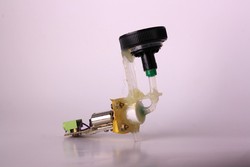
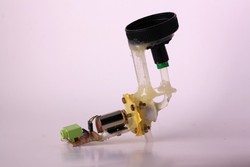
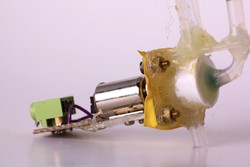
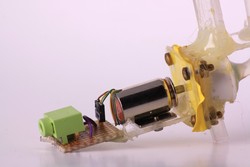
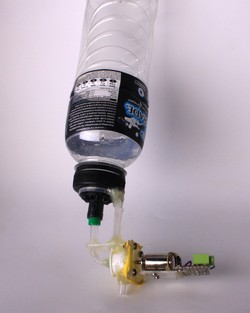
The controller
In order to have a precise control on the drop generation, the solenoid valve is driven by a controller built around a MSP430G2452. One single pin of the µC is needed to drive the MOSFET which activates the solenoid, the rest of the circuit is dedicated to the user interface (push buttons and LCD). Through this interface, the user can select the number of drops, the delay between each drop and, to a certain extent, the size of each drop (which is determined by the time during which the valve remains opened).
The LCD I used is a MC1602X-SYL display (datasheet) scavenged from an old server lying in an electronic recycle bin. It has two lines of 16 characters. It is the same one I used to build my stroboscope
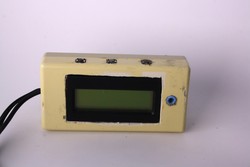
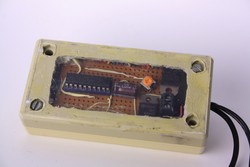
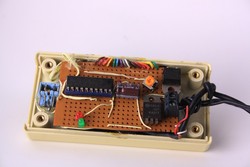
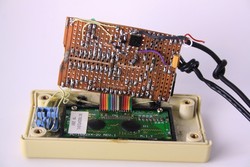
Pictures
With this system I get a collision rate of almost 100%.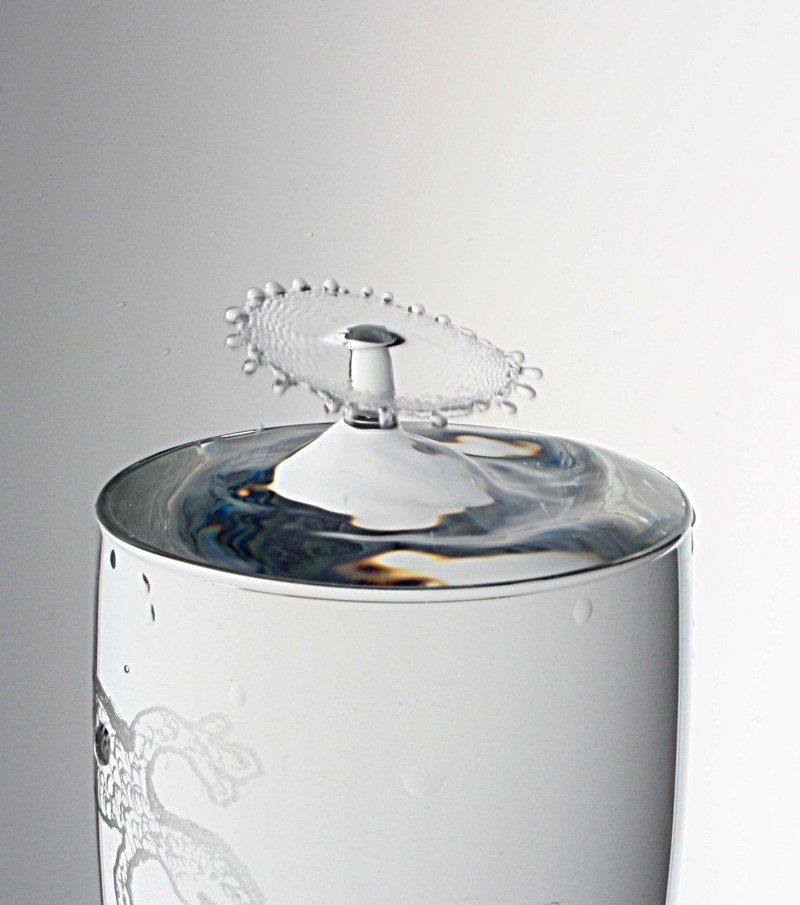
For more pictures of drops made with this system, go to the drops pictures page.
